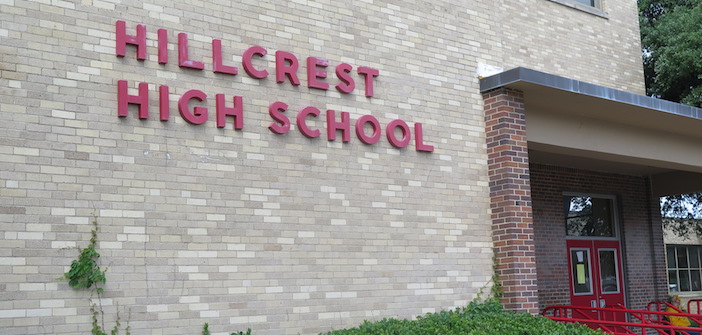This article first appeared in the Hillcrest Hurricane, Hillcrest High School’s student-run newspaper. Delaney Shiu, a junior at Hillcrest High School, wrote this article.
This year, a main subject of concern at Hillcrest High School has been the upcoming implementation of the International Baccalaureate (IB) Program for the 2016-2017 school year.
Teachers of different subjects have been attending training sessions throughout the year in order to become certified IB teachers and so they can further our education. The questions remain: what changes will this bring to Hillcrest and how are we preparing for it?
“We still need to submit two applications to IB by the April 1, 2016 deadline,” IB committee member Gilbert Vansoi said. “So assuming our applications are submitted on time and there are no unforeseen concerns from IB, then we should be up and running by the start of the 2016-2017 school year.”
IB is made up of smaller programs for different age groups. The programs that would be implemented into Hillcrest’s curriculum in upcoming school years would be the Middle Years Program (MYP) and Diploma Program (DP). The DP is aimed mainly at juniors and seniors in high school and various teachers have already attended training sessions for classes within that program even though it won’t begin next school year like the MYP.
“I went to IB training in January and it was fantastic,” AP Language teacher Kristin Huntley said. “The presenter was really knowledgeable and is even open to email discussions and questions that we might have about the classes. I didn’t feel like any of the training was for show or a waste of time. We were in a room for two and a half days working specifically on how to develop and plan for IB English Language and Literature classes.”
The main difference between the IB program and the already in-place AP program is the global views that the IB program possesses. In AP classes, a student in an English class would typically read excerpts only from a certain region, but in the IB program the student would read passages from all over the world to give the student a better idea of the different viewpoints from people in different regions. The IB program also has the same basic curriculum no matter where a student is located; that allows a student to move from one region to another without losing anything in their academic lives content-wise and makes moving easier.
Another difference between the AP and IB programs are the way that students are tested. In the IB program, specifically the DP section, students’ classes are spread over the course of the two year program and their tests, which would be the equivalent to a current AP test, are also spread out over those years.
“Differences between AP and IB include a more holistic approach to assessments, an international focus, and student self-reflection through a capstone– like extended essay, and theory of knowledge components,” Mr. Vansoi said.
Another hot topic of discussion this year are the changes to the schedules and building for the years to come. There is no definite schedule being implemented next year, but as of now the proposed plan is to begin a block schedule system comprised of A, B, and C days. The new schedule system is being chosen based on how well it will work with the potentially new extracurricular activities that are also beginning next year. Along with the possible new schedule, there has been speculation about improved facilities within the school and new extracurricular activities being added as an option for students to join.
Principal Leeann Bartee, along with the members of the IB committee, are working together to decide what changes will be necessary to make the transition to being an IB school as smooth as possible.
“I think this is a really great opportunity for Hillcrest scholars to shine, inside and outside of the classroom,” Mr. Vansoi said. “All of us will benefit from the IB methodology. I am beyond excited to have this program take off at Hillcrest.”

